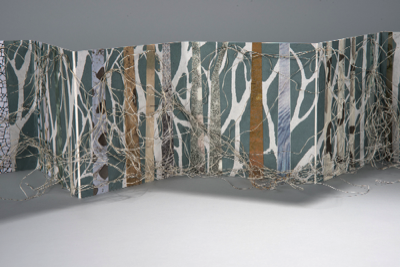Alpines

Wildflowers
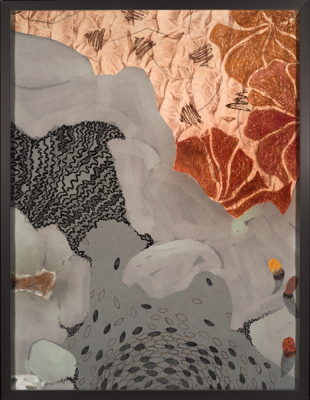
paper, wire, linen thread, ink, graphite, pastels, colored pencil, clorox
5' x 4'
2013
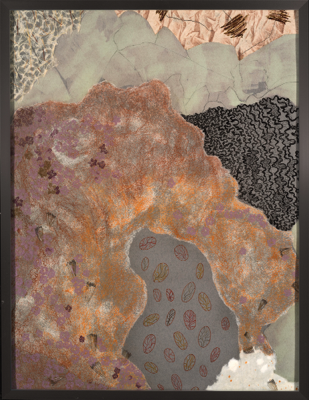
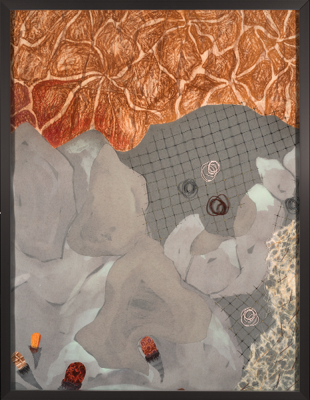
In Colorado's subalpine zone, 10,000-12,000 feet, deeply rooted native plants are abundant.There are well over 200 species. The geology of the area is composed of precambian granite and gneiss. "Wildflowers" includes the following native plants: Alpine Forget-me-nots, Bindweed, Chicory, Cone Flower, Evening Primrose, Evening Star, Goldenrod, Wine Cup
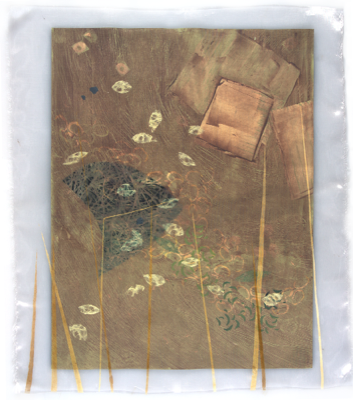
paper, mylar, acrylic, ink, clorox, with printed silk overlay
19" x 24"
2013

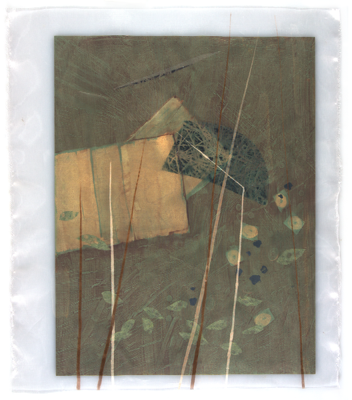



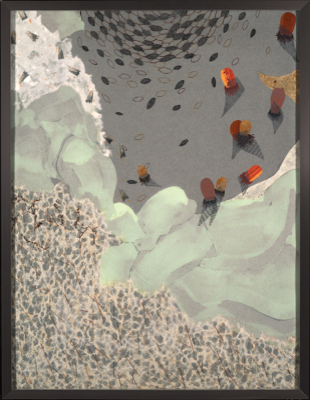

Tarns are small, glacier carved mountain lakes set in steep-walled amphitheatres called cirques. Glacial debris deposits (moraines) often create tarns by damming meltwater runoff. The highest tarn is 13,420 feet, called Pacific Tarn, in the Tenmile Range near Breckenridge Colorado. Although galciers first appeared in the Rocky Mountains up to 500,000 years ago, most features we see today were carved during the Pinedale Glaciation, 10,000-35,000 years ago. Many contain an active bioculture.
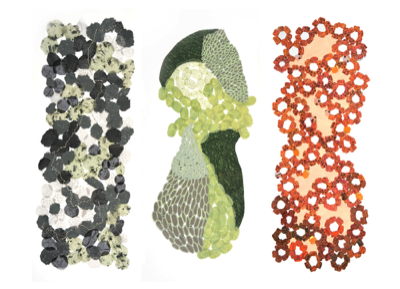
The plant-like appearance of lichens hides their true identy. A lichen is not a single organism, but the result of a partnership between a fungus and an alga. Some lichens are formed of three or more partners. The lichen fungus provides its partner a benefit (protection) and gains nutrients in return.
Ancient forrests and other undisturbed ecosystems are vanishing from the world - and with them the biological diversity they sustain.
With over 3600 species in the US and Canada, lichens are a major component of biological diversity. Habitats with the highest lichen diversity are remnants of these ancient biosystems.
Lichen bodies come in 4 shapes: foliose (flat leaf-like), crustos (crust-like), fruticose (shrub-like), squamulose (scaley, lobe-like).
paper, silk, mylar, acrylic, ink, linen thread
6' x 5'
2013
paper, silk yarn, foam core
6" x 6'
2013

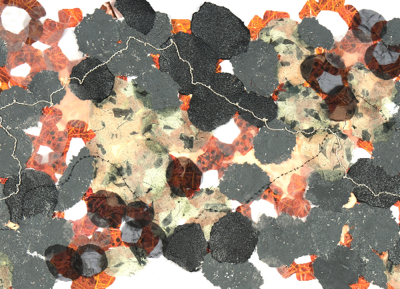
Populus Tremuloides is a native tree to cooler areas of North America., commonly known as aspens. Trunks are up to 82 feet tall with smooth pale bark, scarred with black. It propagates itself primarily through root sprouts, spreading about 1 metre per year. Each colony is its own clone, with all trees having the same single root structure. Fall color is brilliant yellow. One clonal colony, named Pando, is 80,000 years old. Most stands are same sex.
Tarn
Lichen
Aspens
